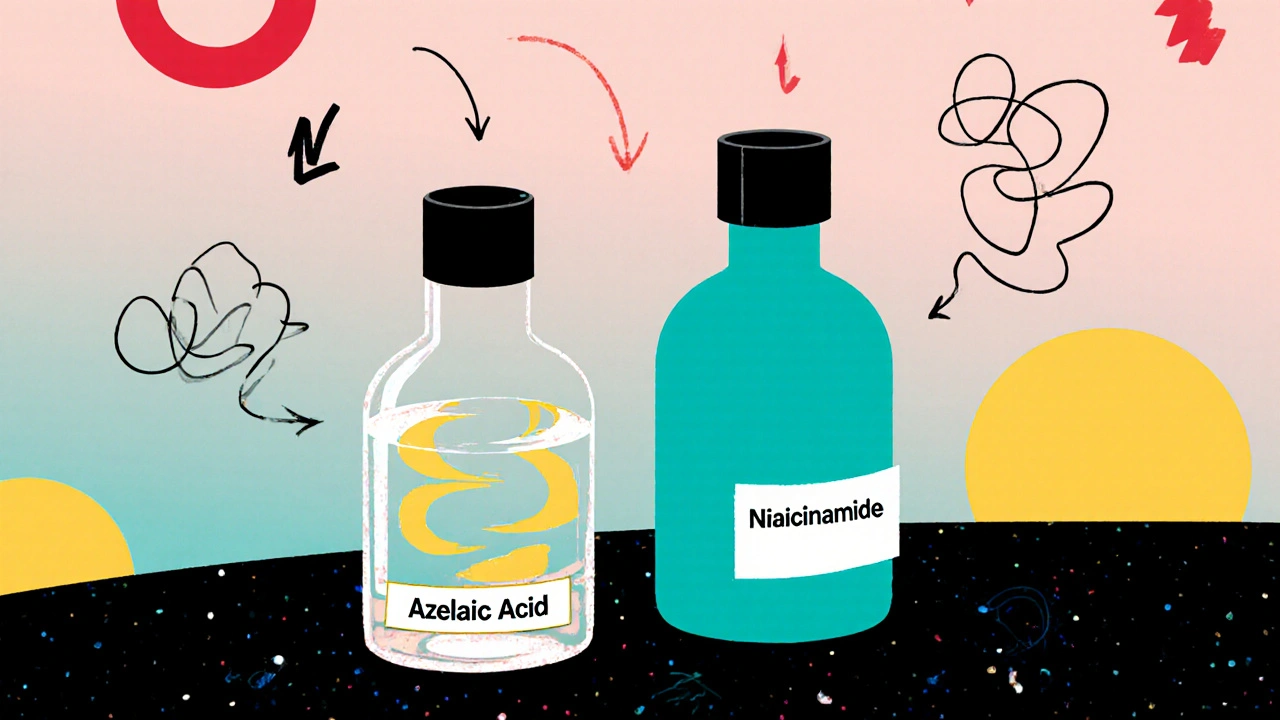Acne Treatment: Effective Options, Common Mistakes, and What Really Works
When it comes to acne treatment, a range of medical and topical approaches used to clear and prevent breakouts. Also known as acne therapy, it’s not just about washing your face harder—it’s about understanding what’s triggering your breakouts and matching the right solution to your skin type. Too many people try every product on the shelf, only to get frustrated when nothing sticks. The truth? Acne isn’t one-size-fits-all. What works for your friend might do nothing for you, and that’s normal.
Topical acne meds, creams and gels applied directly to the skin to target bacteria, oil, and clogged pores. Also known as external acne treatments, they’re often the first line of defense. Things like benzoyl peroxide, adapalene, and clindamycin aren’t magic, but they’re backed by years of clinical use. Then there’s oral antibiotics for acne, prescription pills like doxycycline or minocycline used to reduce inflammation and kill acne-causing bacteria. Also known as systemic acne treatment, they’re not meant for long-term use. Doctors usually prescribe them for moderate to severe cases, and they’re almost always paired with topical treatments to prevent resistance.
But here’s what most guides miss: hormonal acne, breakouts tied to hormonal shifts, often appearing around the jawline and chin in adults. Also known as adult female acne, it’s not caused by dirt or greasy food. If you’re getting breakouts before your period, or after starting or stopping birth control, hormones are likely the real culprit. That’s when things like spironolactone or oral contraceptives can make a real difference—something most over-the-counter kits won’t tell you.
And don’t fall for the myth that scrubbing harder = clearer skin. Over-washing, using harsh exfoliants, or piling on too many products can strip your skin, trigger more oil, and make acne worse. A simple routine—gentle cleanser, proven active ingredient, moisturizer, sunscreen—is often all you need. The real challenge? Sticking with it. Most treatments take 6 to 8 weeks to show results. If you quit early, you’ll never know if it would’ve worked.
What you’ll find in the posts below isn’t a list of miracle cures. It’s real talk about what’s actually used in clinics, what the research says, and what people report working—or failing—at home. From how certain medications interact with your skin to why your skincare routine might be making things worse, these posts cut through the noise. You won’t find fluff here. Just clear, practical info that helps you make smarter choices without guessing.

Azelaic Acid + Niacinamide: Clear Skin Combo Guide
- Oct, 21 2025
- 13
Discover why azelaic acid and niacinamide make a powerful duo for acne, redness, and dark spots, and learn how to add them safely to your skincare routine.
Categories
- Health and Wellness (52)
- Medicine (36)
- Health and Medicine (34)
- Women's Health (9)
- Mental Health (8)
- Men's Health (7)
- Beauty and Wellness (4)
- Health Information (4)
Archives
- December 2025 (24)
- November 2025 (25)
- October 2025 (27)
- September 2025 (14)
- August 2025 (3)
- July 2025 (2)
- June 2025 (2)
- May 2025 (3)
- April 2025 (4)
- March 2025 (4)
- February 2025 (2)
- January 2025 (3)
- online pharmacy
- medication safety
- dietary supplement
- health benefits
- dietary supplements
- prevention
- fertility
- online pharmacy Australia
- diabetes medications
- treatment
- treatment options
- benefits
- connection
- drug interaction
- drug interactions
- pregnancy
- Cancer Treatment
- depression medication
- antidepressants
- quality of life
